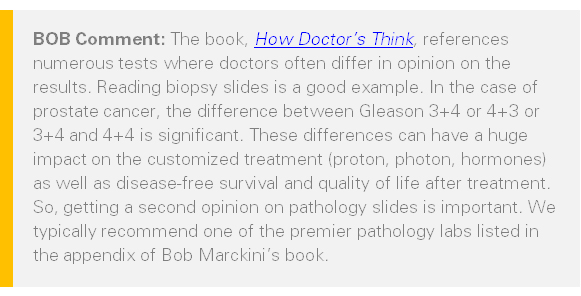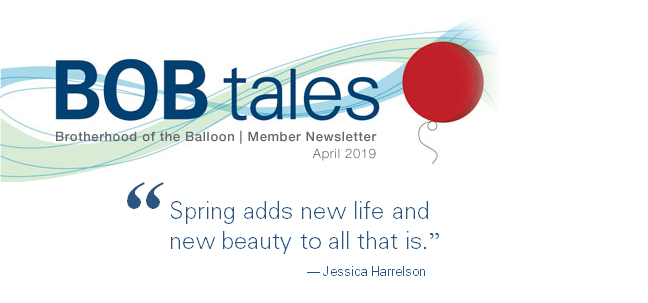
Dear Members (a note from Bob Marckini):
Spring began last week; daylight savings is back; we’re seeing more sunlight every day; Red Sox home opening day is April 9; and my local golf course will open this month. All’s right with the world!
NPC and COMPPARE
By the time you read this April issue of BOB Tales, Deb will have left for the annual National Proton Conference in Miami and I will have participated in the COMPPARE workshop in Amelia Island, Florida. Both are late March events.
Who would have guessed Deb Hickey and Marco Rubio would be speaking at the same conference. I’m so proud! Maybe Sen. Rubio volunteered to speak because he knew Deb would be there and it might get him more attention/votes if he decides to run again in 2020 … Who knows?
The topic of Deb’s panel is “Patients as Advisors and Partners.” Her presentation focuses on the BOB organization and how our members, over the years, have provided so much help and advice to others who are just beginning their prostate cancer journey. It occurred to me when Deb and I were discussing her talk that this concept—patients as advisors and partners—seems to be unique to proton therapy patients.
When I was diagnosed more than 18 years ago, I clearly remember trying hard to learn about the patient’s experience from those who had chosen surgery, conventional radiation, or seeds. It was near impossible to find men in these categories who would agree to talk about their experience of treatment and life after treatment. The doctors who specialized in each of these modalities refused to connect me with their patients. I had great difficulty getting firsthand knowledge from those who had been through these treatments.
All that changed when I discovered proton therapy. When I asked if I could speak with former proton patients, Loma Linda sent me a list of 30 men who invited phone calls and emails. I managed to reach 20 of them. The rest were on vacation or traveling the world. Three of the men I contacted lived in Massachusetts and they insisted on driving to my home to talk about their adventure. Through these 20 men, I managed to reach 36 more former proton patients. They were all exceptionally helpful. I wrote about this in my book.
The point is that, for whatever reason, unlike surgery, conventional radiation, or brachytherapy patients, proton patients want to talk about their experience. They naturally gravitate to becoming “advisors and partners.”
Over the past 18 years, we have registered more than 11,000 members to our group. Most are active members today. Many of them have volunteered to participate in programs where they partner with us to provide advice and support to newly diagnosed men and their families. These programs include the numerous reference lists we provide, testimonials on our website, our “Life after Proton” series, presenting the BOB PowerPoint to groups in their communities, establishing their own blogs to promote proton therapy, and even writing books about their proton experience—11 at last count. Our members are also active on the political front helping to convince individual states to provide coverage for proton therapy, despite private insurer’s objections. We hope to have some good news to share on that subject in the May issue of BOB Tales.
Regarding the COMPPARE workshop that I’m attending, we’re still in the early phase of the program. After the workshop I hope to have some specific information to share in our next newsletter. You may recall this important project, headed up by Dr. Nancy Mendenhall from UFHPTI, with participation by all U.S. proton centers, will attempt to answer the question, once and for all, as to whether or not there are discernible differences between proton therapy and IMRT in treating prostate cancer.
Growing Older
On a different subject, I’ve been doing a lot of thinking about growing older. Maybe it’s because I will be 76 in a couple of weeks. I used to think that mid-70s was really old. I don’t feel old. In fact, I can honestly say I’ve never felt better. I’m still swimming three miles a week, exercising in other ways, and eating a healthful diet.
I read the local newspaper every morning and, I must admit it aggravates me when they refer to a person in his or her 60s as “elderly.” I was in my mid-60s 10 years ago, and I certainly wasn’t elderly then, and I’m not now … at least I don’t feel elderly. I do find myself, however, paying more attention to the obituaries in our local paper and occasionally recognizing one of the names.
Speaking of age, you may recall in past issues of BOB Tales, we wrote about one of the elder statesmen of our group, Charlie Einsiedler. Charlie was 87 when he was diagnosed with prostate cancer. His doctor suggested he do nothing because of his advanced age.
Charlie would have none of this, so he did his homework and discovered proton therapy. I met with Charlie several times and spoke with him often over the years until his death from natural causes at age 102. During most of those 15 years after his diagnosis, Charlie remained active, playing golf and exercising his mind working on engineering projects.
Another member of our group, Charles Smithgall, who is also a good friend, is 77 and in excellent health. I spoke with him this week—he was fishing in Mexico. Charles observed a birthday in his family this month—his mother’s! Lessie Smithgall celebrated her 108th birthday! When Charles visits her, he has to call first to make sure she’s home and not out at the beauty parlor or someplace else. She’s healthy, active, and living life to the fullest.
Our Final Thought this month covers essential life lessons of faith, trust, hope, security, love, and attitude. One thing I’ve found is that happy, long-lived people like Charlie Einsiedler and Charles and Lessie Smithgall exemplify these characteristics every day. It’s a good lesson for all of us.
I think you’ll enjoy this month’s newsletter. Once again we cover a broad range of subjects related to prostate cancer prevention and treatment, proton therapy, hormonal therapy, health tips, a “miracle” drink, a new brain teaser, and some good humor. We also have some interesting information for our members who ride bicycles.
Bob Marckini
As always, we welcome and appreciate your feedback on our newsletter. Just send an email to [email protected].
To print the BOB Tales newsletter or view the newsletter with a larger font size, click here for the PDF file.
In this Issue:
- Updated Results—Finasteride Safely Lowers Prostate Cancer Risk
- Hormonal Therapy—How Long is Enough?
- Five Ways to Reduce Your Risk of Prostate Cancer
- One More Reason to Get a Second Opinion
- Prostate-Friendly Bicycle Seat?
- Long-term Exercise Reduces Fall Risk and Resulting Injuries
- High Fiber Diet and Plenty of Whole Grains Can Help Reduce Risk of Chronic Diseases
- Ten Major Benefits of Green Tea

Updated Results—Finasteride Safely Lowers Prostate Cancer Risk
.jpg) Finasteride—sold under the brand name Proscar—is a hormone-blocking medication used mainly to treat symptoms of benign prostatic hyperplasia (BPH) in men with enlarged prostates (also used to treat male pattern hair loss).
Finasteride—sold under the brand name Proscar—is a hormone-blocking medication used mainly to treat symptoms of benign prostatic hyperplasia (BPH) in men with enlarged prostates (also used to treat male pattern hair loss).
A clinical trial was funded by the U.S. National Cancer Institute and enrolled nearly 19,000 men between 1993 and 1997. Results, published in 2003, showed finasteride reduced the risk of prostate cancer by 25 percent.
Newly released longer-term data show that the reduction of prostate cancer risk has continued and that fewer than 100 men in the trial died from prostate cancer in more than two decades of follow-up.
Updated results also show no statistically significant increased risk of death from prostate cancer among men taking finasteride. This new information eliminates concern over earlier findings of a possible risk of more aggressive cancers among patients taking finasteride.
Hormonal Therapy—How Long is Enough?
A standard approach to treating men with intermediate- or high-risk cancer that is still localized to the prostate is radiation along with hormonal therapy that blocks testosterone. Hormonal therapy can come with side effects—fatigue, impotence, hot flashes, and loss of muscle mass. But radiation doesn’t control prostate cancer as effectively without it. So how long should hormonal therapy last?
Guidance from a New Study
In a new randomized study of 1,071 men with intermediate- or high-risk localized prostate cancer, men were split up into four groups: one received radiation and six months of hormonal therapy; the second received radiation plus 18 months of hormonal therapy; and two other groups were treated with the same regimens plus another drug, which helps limit skeletal pain and related complications should cancer spread to the bones.
The Results
After a median follow-up of 10 years, 9.7 percent of men treated with radiation and hormonal therapy for 18 months died from prostate cancer compared to 13.3 percent of men who had the same treatment for six months. The medication to reduce skeletal pain made no difference.
Researchers concluded that hormonal therapy is more effective at preventing prostate cancer death when it’s given for 18 months rather than six. More benefits were noted: tumors were less likely to metastasize among men in the longer duration treatment group, and it took longer for their cancers to become resistant to hormonal therapy if it was reinitiated later.
Five Ways to Reduce Your Risk of Prostate Cancer
Daily Wellness is a company that promotes natural healthcare products. They commonly sponsor independent, double-blind, placebo-controlled studies at research institutions that have resulted in numerous peer-reviewed medical journal publications. They recently posted an article titled, Five Ways to Reduce Your Risk of Prostate Cancer. While we feel this may be a somewhat superficial treatment of the subject, the points they make have value for both prostate health and general health. Following is a summary of the article.
- Focus on Your Vitamin D Intake: Doctors generally agree that the normal range for vitamin D is between 30 and 74 ng/mL. In the article, Daily Wellness states that anything below 60 ng/ml is low. The Endocrine Society, in a recently published article suggested that “virtually everyone in the U.S. should be taking vitamin D supplements,” and they suggested that both children and adults should try to maintain their vitamin D levels at 40 – 60 ng/mL. VitaminDCouncil.org suggests levels of 50 to 80 ng/ml for optimum health. Interestingly, Dr. Charles “Snuffy” Myers, noted prostate cancer expert, agrees with the Daily Wellness position. He’s stated in his Prostatpedia newsletter that men at risk for prostate cancer should monitor their vitamin D levels and take vitamin D3 as necessary to maintain a level at the high end of the normal range. He also recommends purchasing vitamins and supplements from only the most reputable manufacturers. His favorite is Life Extensions.
- Avoid Consistent Sitting: Long-term sitting keeps pressure on the prostate bed impeding blood flow, which carries oxygen and nutrients to the area. Frequent breaks from sitting to walk and move about are recommended. A sedentary lifestyle reduces blood circulation which can negatively affect your health in many ways.
- Consider Taking Zinc: Men with prostate problems are often found to have low zinc levels in their bodies. Zinc is an essential nutrient that supports your immune system and the enzymatic processes. Zinc is available in certain organic foods, pumpkin seeds and certain pasture-raised animal products.
- Drink Tea: Green tea especially has been found to help prevent prostate cancer or slow the progression of the disease. It also reportedly may help prevent advanced prostate cancer. Make sure to read our Health section this month for more on green tea.
- Eat Healthfully: We have written before about studies showing a connection between red meat, processed meats, animal fats, and dairy products and prostate cancer. Foods that are reported to help prevent prostate cancer include a wide variety of fruits and vegetables and other foods with high doses of minerals, fiber, vitamins, antioxidants, and polyphenols. These foods fight inflammation which helps protect prostate health and lessen the risk of prostate cancer.
One More Reason to Get a Second Opinion
We’ve heard similar stories and reported on them in previous issues of the BOB Tales. Too many patients complacently put all their trust in one physician (or one pathologist, in this case). The result can be life-changing, and not in a good way.
After he was wrongly diagnosed with cancer, a man from Iowa is suffering the effects of unnecessary surgery to remove his prostate gland. Sadly, Rickie Lee Huitt, 67, couldn’t get his prostate back. He sued the clinic that mixed up his tissue sample slides with another patient’s, which resulted in an incorrect cancer diagnosis and a debilitating, unnecessary surgery that resulted in incontinence and other serious side effects.

We have been producing BOB Tales newsletters monthly for more than 18 years. During this time there have been important articles that many new members have not seen, and some older members may have forgotten. So, we decided to periodically re-run some articles from past newsletters. This one is from January 2005.
“Anguish I Know Thee by Thy Real Name”
I received this from last month’s “BOB Tales Featured Member” and sharing it with his permission. Like many who are in treatment or have recently completed treatment, he was experiencing some temporary urinary urgency. If this doesn’t make you laugh out loud, you have no sense of humor.
“I had to go, and I mean that. I really had to go. But my daughter was in the hospital just coming out of surgery, and I was anxious to visit with her while she was still in intensive care. So I held it. Besides, it would be only for 10 minutes at the most. I didn’t count on the noon traffic and the influence of Christmas shoppers, so I began looking around for a place to pull off—you know, like a gas station or fast-food restaurant. There was nothing in sight. Anguish, I know thee by thy real name!”
“Finally, I saw the hospital. ‘I’m gonna make it…’ I mumbled, and headed for the parking garage. Round and round; three floors down, I found a parking place and bolted for the nearest exit. I wasn’t 10 feet from my car when I realized I wasn’t going to make it.”
“I had no choice, did I? I hurried back to my car and stood in front of it—between the car and a half-high concrete wall separating me from the cars on the other side. Hunched over as much as possible, I proceeded to do what I had to do (while praying I wouldn’t be seen). I looked through my windows at the cars passing by and decided they all had better things to do than pay attention to me. However, at that time I realized in my rush to get into the hospital, I hadn’t locked my car. So, I reached in my jacket pocket with my free hand and groped for my keys to press the ‘lock’ button. But I hit the ‘panic’ button instead! My horn began blasting and the lights flashed. The only way to stop all the commotion was to put the key in the door lock, which I couldn’t do, obviously. So, about 30 more seconds passed of the noise and light show before I could make myself presentable and escape my hide-out.”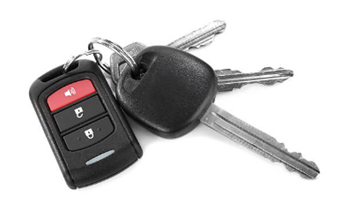
“The good thing about car alarms is that no one pays any attention to them … thankfully.”
“I learned a few lessons from that experience—one is that I’m not very good at multi-tasking.”

Where Your Money Goes
Lots of members ask where their money goes when they make a contribution to proton research at Loma Linda University Cancer Center. Many think it goes directly to help others who have been diagnosed with prostate cancer and they are correct. What many don’t know is that their contributions are also used to further proton therapy research in general, helping patients suffering from other types of conditions including breast cancer, lung cancer, acoustic neuroma, chondromas and chondrosarcomas, meningiomas, arteriovernous malformations, isolated brain metastases, pituitary ademas, uveal melanomas, nasopharynx, oropharynx, sarcoma of the paranasal sinuses, parameningeal rhabdomyosarcomas, and several pediatric conditions.
Cheryl’s Story
Cheryl Bellerose had been suffering from dizziness and headaches. After an MRI at Loma Linda University Health, she was diagnosed with an acoustic neuroma on her ear nerve. “I was nervous and scared,” she said. After weighing the treatment options, she decided on proton therapy. “My cousin had terminal brain cancer and was treated with proton therapy at Loma Linda. The outcome was good, so that’s what made me decide to have proton therapy.” Cheryl says her treatment went smoothly; she had no side-effects; and it was quick and comfortable. “I came in from work, had my treatment, and was back at work in 30 minutes,” she said. “My biggest blessing is that proton therapy has saved the lives of many members in my family—my cousin with terminal cancer and two uncles had proton therapy for prostate cancer. We’re a proton family. I’m feeling great.”
Honor a Friend, Caregiver, or Proton Center
When you make a gift, you can do so in the name of someone you would like to honor, such as a caregiver at the institution or someone outside the institution, like a friend or member of your family. A letter will be sent to that individual informing him/her that a gift was made in his or her honor.
We sincerely thank you for anything you can do to support proton therapy research.
How to Give to Proton Therapy Research
- Donate Online: Visit the LLUCC website.
- Send a Check: Make it out to “LLUCC Proton” with “Marckini Chair” on the memo line and send to: LLUH, Office of Philanthropy, P.O. Box 2000, Loma Linda, CA 92354.
- Make a Call: Contact Regina Joseph at 909-558-5010.
How to Give to Vision 2020
- Donate online: Visit the LLUH website.
- Send a check: Make it out to: “LLUH Vision 2020.” Mail to: LLUH, Office of Philanthropy, P.O. Box 2000, Loma Linda, CA 92354.
- Make a call: Call 909-651-2020.
How to Make a Future Gift
- Make a future gift: Contact Todd Mekelburg at the Office of Planned Giving at Loma Linda University Health at 909-558-5376 or [email protected].

2019 National Proton Conference: Miami, FL
The National Association for Proton Therapy (NAPT) is the voice of the proton community. The organization provides education and awareness for the public, professional, and governmental communities. Join NAPT for the 2019 National Proton Conference March 24 - 27, 2019, at The Biltmore Miami-Coral Gables in Coral Gables, FL. Attendees will include physicians, nurses, therapists, patients, proton therapy directors, and managers.
Deb Hickey is attending and taking part on a panel at this conference next week. Please look for a detailed recap of the conference in our May issue of BOB Tales.

Prostate-Friendly Bicycle Seat?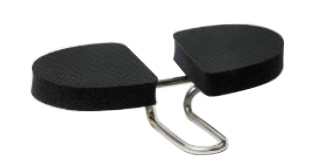
This information should be of interest to our bike-riding members. About 10 years ago, Bob Marckini was contacted by the owner of “Spongy Wonder,” a company that invented the Spongy Wonder Noseless Bike Seat—a bicycle seat made of two adjustable cushions and no forward horn or “nose.”
Spongy Wonder owner Jeff Dixon told Bob he sells lots of seats to prostate cancer patients who are trying to keep pressure off the prostate and perineum. We mentioned this in the BOB Tales at the time, but don’t recall receiving much feedback from members. We hadn’t thought much about it over the years until we received an inquiry last month from one of our bike-riding members who asked if we were aware of a “prostate-friendly” bicycle seat.
Recalling Spongy Wonder, we checked our records; found the Canadian company was still in business; and sent a link to the member. Bob also contacted Jeff to reconnect and see how business is going. Jeff said men typically don’t realize the damage being done as a result of pressure to the perineum from the conventional bicycle seat. He also noted that female cyclists also suffer cumulating damage from conventional bicycle seats.
If you’ve found a seat that works for you, we’d love to hear about it. Please send an email do [email protected].
Long-term Exercise Reduces Fall Risk and Resulting Injuries
According to researchers at the Toulouse University Hospital in France, older adults who exercise regularly for at least a year are 12 percent less likely to fall. And, if they do fall, they are 26 percent less likely to suffer injuries and have a 16 percent lower risk of fractures.
Researchers analyzed data from 40 clinical trials with close to 22,000 adults who averaged 73 years of age. Details of the study can be found in the Journal of the American Medical Association Internal Medicine.
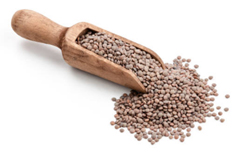 High Fiber Diet and Plenty of Whole Grains Can Help Reduce Risk of Chronic Diseases
High Fiber Diet and Plenty of Whole Grains Can Help Reduce Risk of Chronic Diseases
New research has found that including plenty of fiber and whole grains in the diet can help reduce the risk of chronic diseases such as coronary heart disease, stroke, type 2 diabetes, colorectal cancer, and prostate cancer.
Researchers examined data from 185 observational studies and 58 clinical trials involving 4,635 healthy adults. They focused on the effects of dietary fiber and whole grains on the risk of premature deaths from various diseases and cancers associated with obesity.
Fiber
Findings suggest that those who ate the highest amount of fiber (25-29g/day) benefited from a 15 to 30 percent decrease in all-cause and cardiovascular-related mortality when compared to people who ate the least amount of fiber. Furthermore, eating foods rich in fiber also reduced the rates of coronary heart disease, stroke, type 2 diabetes, and colorectal cancer by 16 to 24 percent.
There also appeared to be a dose-response relationship that suggests a higher intake of dietary fiber (above 25-29g/day) could provide even greater benefits to protect against cardiovascular diseases, type 2 diabetes, and colorectal and breast cancer.
A higher intake of fiber was also associated with lower body weight and cholesterol, compared with lower intakes.
Whole Grains
A higher intake of whole grains was associated with a 13 to 33 percent reduction in the risk of developing chronic diseases. Whole grains were also associated with a reduction in body weight. Researchers explained that whole grains are high in dietary fiber, which could explain the benefits.
The study found only limited support that diets with a low glycemic index and low glycemic load offered protection against type 2 diabetes and stroke. They explained that foods with a low glycemic index or low glycemic load may also contain added sugars, saturated fats, and sodium, which could account for the health benefits of this type of diet being less clear.
Ten Major Benefits of Green Tea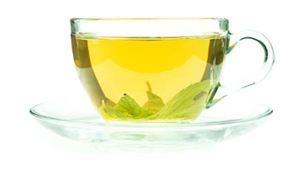
We’ve written about green tea in many issues of the BOB Tales over the years—and for good reason: Green tea is recognized globally as the most healthful and nutritious beverage you can drink (besides water). It’s loaded with antioxidants and nutrients that have powerful effects on the body. Following is a list of the benefits of drinking green tea.
- Enhances Overall Health: Green tea contains numerous compounds that have anti-inflammatory, anti-aging, and anticancer effects. Green tea also contains compounds that prevent various diseases.
- Sharpens Brain: Although it’s important not to overload on caffeine, the small amount found in green tea can provide mental alertness. Green tea also contains the amino acid L-theanine, which improves the blood-brain barrier.
- Boosts Physical Performance: Green tea may also help to invigorate metabolic rate thereby boosting energy.
- Cuts Risk of Some Cancers: Green tea is an outstanding antioxidant, reducing the risk of developing various cancers, including prostate cancer.
- Protects the Brain: Aside from enhancing the functionality of the brain, the catechin component in green tea has a protective impact on neurons, reducing the likelihood of Alzheimer’s and Parkinson’s diseases.
- Destroys Bacteria/Enhances Dental Health/Reduces Infection: A cup of green tea contains up to 200 mg of catechins, whose biological activity has been mainly attributed to its antioxidant activity. The catechin in green tea has also been attributed to reducing the risk of developing tooth decay, gum disease, and even oral cancer.
- Reduces Risk of Type 2 Diabetes: Polyphenols in green tea can help regulate glucose in the body, helping to prevent or control diabetes.
- Reduces Risk of Obesity: Studies suggest the active compounds in green tea can aid in the process of breaking down fat by boosting the effects of some fat-burning hormones, such as norepinephrine.
- Reduces Risk of Cardiovascular Disease: Some studies suggest that green tea may lower LDL cholesterol and triglycerides, helping to reduce the risk of cardiovascular disease and stroke.
- Lengthens Life: Because green tea has been attributed with lower rates of cardiovascular infection and cancer, the perception is that it can prolong your life. In fact, a Japanese study involving more than 40,500 adults, found those who ingested the highest amount of green tea—about five or more cups routinely—stood a chance of living 11 more years compared to those who drank lesser amounts.

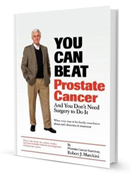
What Readers Say …
Bob Marckini’s book saved my life … It helped me to realize I’m also going to be part of a whole community of survivors through proton therapy. I’m going to live a long time because of the information he selflessly gave me. Buy this book—it could save your life too.
A friend said—before I commit to any treatment, read Bob Marckini’s book … It truly was like a weight lifted from my heart and shoulders.
One night I ran across a reference to this book and thought I’d download it. As I read it and learned about proton beam therapy, I became hopeful. I also learned about the other various treatment options and risks associated with each.
Mr. Markini has done the extensive research on his quest for a cure and taught us how to keep our wits through all of the differing opinions and options that we’ll be faced with.
It’s readable in hours, and in so doing, I came away knowing that proton therapy was the right choice for me … Bob Marckini is a legend … He, together with his daughter Deb, are ambassadors for proton radiation and are wonderful people to know. Thanks to this book, I was able to make a no-brainer decision! Even if you’re still only in the hunt stage, make sure this book is included in the hunt.
Buy Bob's book online, in bulk, or in Spanish.
Online: Paperback: $19.00--•--Kindle: $7.99--•--NOOK Book: $9.99--•--Apple iBook: $9.99
In Bulk: Conctact us for a discount price list. Proceeds from book sales support proton therapy research through the Robert J. Marckini Endowed Chair at LLUCC.
In Spanish: Buy the print version or in eBook format.
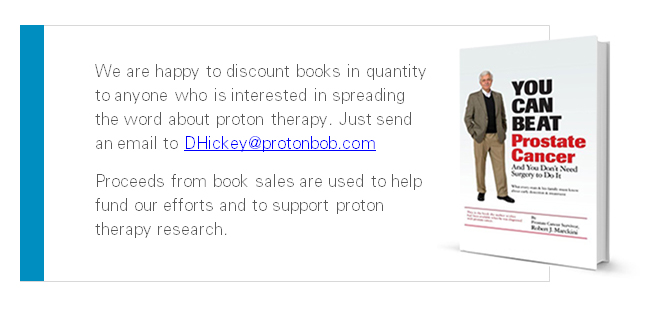

Did You Know? Source
- Just 11 percent of people are left handed.
- Unless food is mixed with saliva you can’t taste it.
- The average person falls asleep in seven minutes.
- Eight percent of people have an extra rib.
- 85 percent of plant life is found in the ocean.
- Ralph Lauren’s original name was Ralph Lifshitz (we’re glad he changed it).
- Dreamt is the only word that ends in “mt.”
- People in Switzerland eat the most chocolate, equating to 220 pounds per person each year.
- “Stewardesses” is the longest word that is typed with only the left hand
- Honey is the only natural food that never spoils.
- M&M’s chocolate stands for the initials for its inventors, Mars and Murrie.
- The longest street in the world is Yonge Street in Toronto, Canada, measuring 1,178 miles.
Estate Planning Hints
BOB Member Ron Hendricks is Director of Gift Planning for Trinity Western University. He regularly copies us on his “News from Ron” mailings, which are helpful hints on estate planning to the readers of his newsletters. We have found Ron’s suggestions to be timely and beneficial. With his permission we periodically share some of his wisdom with our membership. This segment is called …
How Do I Begin Planning for My Family’s Future Care?
- Understand and write down what you own. This should include all financial accounts and what property will be transferred through your estate. Include your retirement funds and beneficiaries.
- Understand how property is transferred. Some property is transferred by will and some is transferred by a beneficiary designation or other form. You need to know how your property will be transferred in order to avoid an accidental disinheritance. With a good plan, your property may be transferred as you desire.
- Update your will and medical directives. Be sure to update all of your documents that correctly express your will and desires, both for your property and for your potential future personal care.
- Update your power of attorney for finance and healthcare.
- List all financial accounts with their passwords along with any other passwords needed for phone etc.

Last Month’s Brain Teaser
Say a man buys his wife a ring for $60, then changes his mind and sells it for $70, then changes his mind again and buys it back for $80, then changes his mind again and sells it for $90. What is his profit, if any?
Answer: His profit is $20. Say the man has $200 in his pocket, for example. He spends $60 for the ring, which leaves him with $140. Then he sells it for $70, so he has $210. Then he buys it back for $80, leaving him with $130. And then he sells it for $90, so now he has $220. That’s $20 more than he had when he started.
Winner: Last month’s brain teaser winner is Steve Hobson of Macomb, IL. Steve was diagnosed in December 2017 at the young age of 53. “I read Bob Marckini’s book and then emailed him with questions,” Steve said. “After several prompt responses from Bob, I contacted Loma Linda in the spring of 2018 and underwent treatment that summer.” Steve told us he’s thankful for the treatment he received, the friends he made along the way, as well as all the activities offered by the proton center. He plans to return to Loma Linda for a follow-up appointment soon.
 Steve is now 55, married, and has two “active boys” ages 11 and 12. He calls himself a “farm boy” with an engineering degree from the University of Illinois. He worked as an agricultural engineer for more than 30 years for the USDA-NRCS and is looking forward to retiring at the end of this year.
Steve is now 55, married, and has two “active boys” ages 11 and 12. He calls himself a “farm boy” with an engineering degree from the University of Illinois. He worked as an agricultural engineer for more than 30 years for the USDA-NRCS and is looking forward to retiring at the end of this year.
Congratulations, Steve! Your signed copy of Bob’s book is in the mail.
New Brain Teaser
You’re standing in a hallway with three light switches on the wall, each of which turns on a different lamp inside a closed room. You can’t see inside the room, and you can’t open the door except to enter the room. You can enter the room only once, and when you do, all the lamps must be turned off. How can you tell which switch turns on which lamp?
Send your answer to [email protected] for a chance to win a signed copy of Bob Marckini’s book, You Can Beat Prostate Cancer.
Prayer and Bible Musings from Kids
After the christening of his baby brother in church, Jason sobbed all the way home in the back seat of the car. His father asked him three times what was wrong. Finally, the boy replied, “That preacher said he wanted us brought up in a Christian home and I wanted to stay with you guys.”
I’d been teaching my three-year-old daughter Caitlin the Lord’s Prayer for several evenings at bedtime. She’d repeat after me the lines from the prayer. Finally, she decided to go solo. I listened with pride as she carefully enunciated each word, right up to the end of the prayer: “Lead us not into temptation,” she prayed, “but deliver us from email.”
A Sunday school teacher asked her children as they were on the way to church service, “Why is it necessary to be quiet in church?” One little girl replied, “Because people are sleeping.”
A mother was preparing pancakes for her sons, Kevin (5) and Ryan (3). The boys began to argue over who would get the first pancake. Their mother saw the opportunity for a moral lesson. “If Jesus were sitting here, He would say, ‘Let my brother have the first pancake; I can wait.’ Kevin turned to his younger brother and said, “Ryan, you be Jesus!”
A mother invited some people to dinner. At the table, she turned to her 6-year-old daughter and said, “Would you like to say the blessing?”
“I wouldn’t know what to say,” the girl replied.
“Just say what you hear Mommy say,” the mother answered.
The daughter bowed her head and said, “Lord, why on earth did I invite all these people to dinner?”
The Right Perspective
On my way home one day, I stopped to watch a Little League baseball game being played in a park near my home. As I sat down behind the bench on the first base line, I asked one of the boys what the score was.
“We’re behind 14 to nothing,” he answered with a smile.
“Really,” I said. “I have to say you don’t look very discouraged.”
“Discouraged?” The boy asked with a puzzled look on his face. “Why should we be discouraged? We haven’t been up to bat yet.”
Quote of the Month:
“When buying and selling are controlled by legislation, the first things bought and sold are legislators.” — P.J. O'Rourke

Essential Life Lessons Source
A couple of days ago I received six short stories from a friend, and they made my day by helping me remain centered and remember what life is truly about:
- One day the men of the village decided to pray to ask for rain. The day of the prayer all the people gathered, but only one boy came with an umbrella. That’s FAITH.
- When you toss a baby in the air and s/he laughs, it’s because s/he knows that you’ll catch him/her. That’s TRUST.
- Every night we go to sleep, without the assurance that we’ll be alive the next morning, and yet we set the alarm to get up. That’s HOPE.
- We make big plans for tomorrow in spite of the fact that we don’t know the future. That’s SECURITY.
- We see the suffering in the world and in spite of this we get married and have kids. That’s LOVE.
- There was an old man with the following caption written on his t-shirt: “I’m not 70 years old, I’m 16 with 54 years of experience.” That’s ATTITUDE.
Live your life like this—with faith, trust, hope, security, love, and attitude!
Low PSAs to all,
Bob Marckini and Deb Hickey
To print the BOB Tales newsletter or view the newsletter with a larger font size, click here for the PDF file.
NO MEDICAL ADVICE: Material appearing here represents opinions offered by non-medically-trained laypersons. Comments shown here should NEVER be interpreted as specific medical advice and must be used only as background information when consulting with a qualified medical professional.

